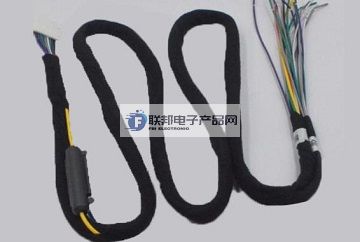Categorization:Product Information
Crimp standards for wire harness terminals are a type of specification used to ensure a reliable connection between the harness and the terminals. These standards are usually developed by the relevant industry organization, manufacturer, or standards body and are designed to ensure the quality, reliability, and safety of the connection. Below are some common harness terminal crimping standards that can help ensure a good connection. Standards Documents and Specifications: Wire harness terminal crimping standards are usually defined in relevant standards documents and specifications. These documents may include standards, industry standards, manufacturer's specifications, or international standards. For example, the International Electrotechnical Commission (IEC) and the Institute of Electrical and Electronics Engineers (IEEE) have published a number of standards and specifications related to crimping of wire harness terminals. Terminal Size and Material: Standards typically specify the size range and material requirements for wire harness terminals. These sizing and material requirements are based on current loading, environmental conditions, and other factors. Terminal sizes and materials must be selected in accordance with the relevant standards to ensure the reliability and safety of the connection. Crimping Tools and Equipment: Standards may also address crimping tool and equipment requirements. These requirements may include crimping tool types, specifications, calibration requirements and maintenance guidelines. The proper selection and use of appropriate crimping tools and equipment is essential to obtaining consistent crimp quality. Crimping parameters: The standard may also define crimping parameters such as crimping force, crimping time and crimping depth. These parameters are designed to ensure that sufficient force is provided during the crimping process to form a reliable electrical connection and must be adjusted to the characteristics of the harness and terminals. Crimp Inspection and Testing: Standards often require inspection and testing of crimped connections to verify the quality and reliability of the connection. These tests may include the use of conductivity testers, tensile strength tests, vibration and shock resistance tests, etc. Inspection and testing of crimped connections ensures that the connection meets the requirements of the standard and will function properly under a variety of conditions. Documentation and labeling: The standard may also require documentation of information related to the crimped connection, such as date, operator, crimping parameters and test results. These records are important for traceability and quality control. In addition, the standard may require that crimped harness terminals be identified so that they can be accurately characterized during subsequent maintenance and troubleshooting.

On the federal electronic products network platform related to the introduction and sales of products briefly: federal electronic products network - a professional agent / production / sales of a variety of [connectors | wiring harness | wire and cable products]; if you have a related [connectors | wiring harness | wire and cable products] purchasing / sourcing needs or would like to buy / to understand which connectors | wiring harness | wire and cable products we can provide solutions, please contact our business staff below; if you have a related [connectors | wiring harness | wire and cable products] sales / resources and promotion needs, please click on the ¡°business cooperation ¡± to discuss with a person! If you have related [connectors | harness | wire and cable products] sales / resources and promotion needs, please click on the ¡¡ Business Cooperation ← ¡" to discuss with a person!